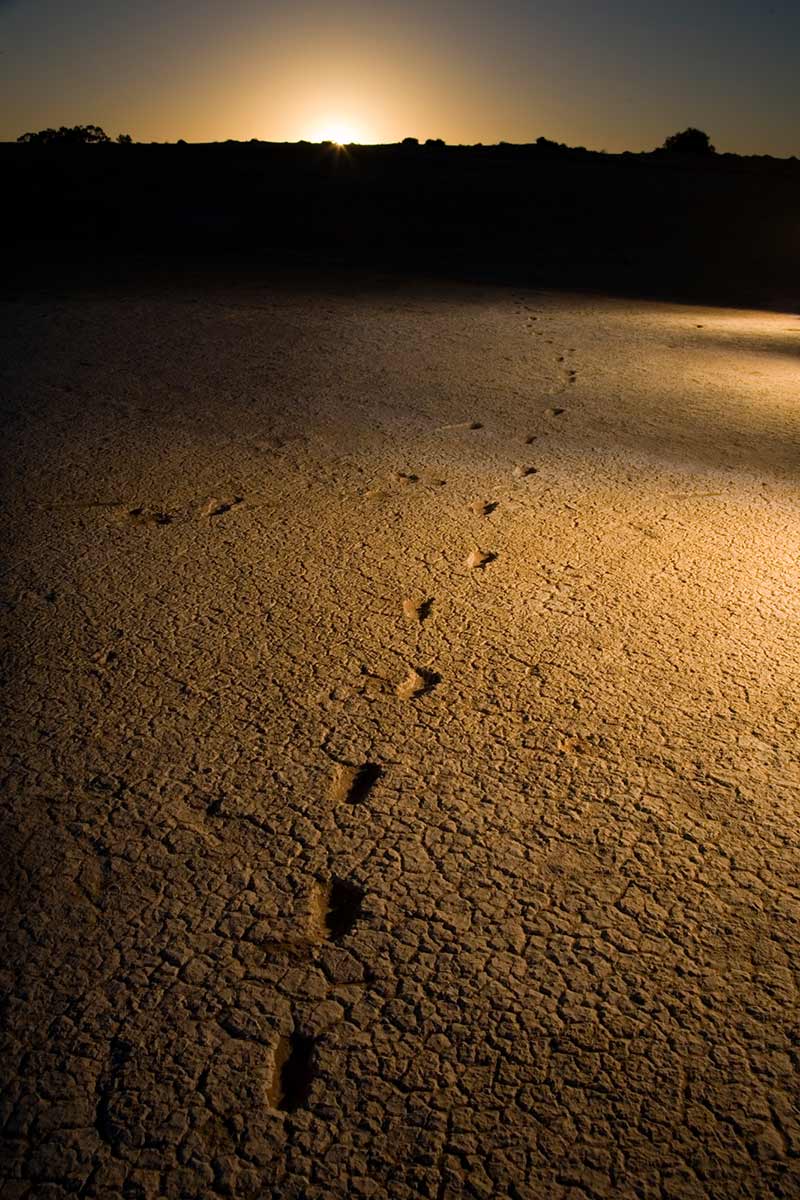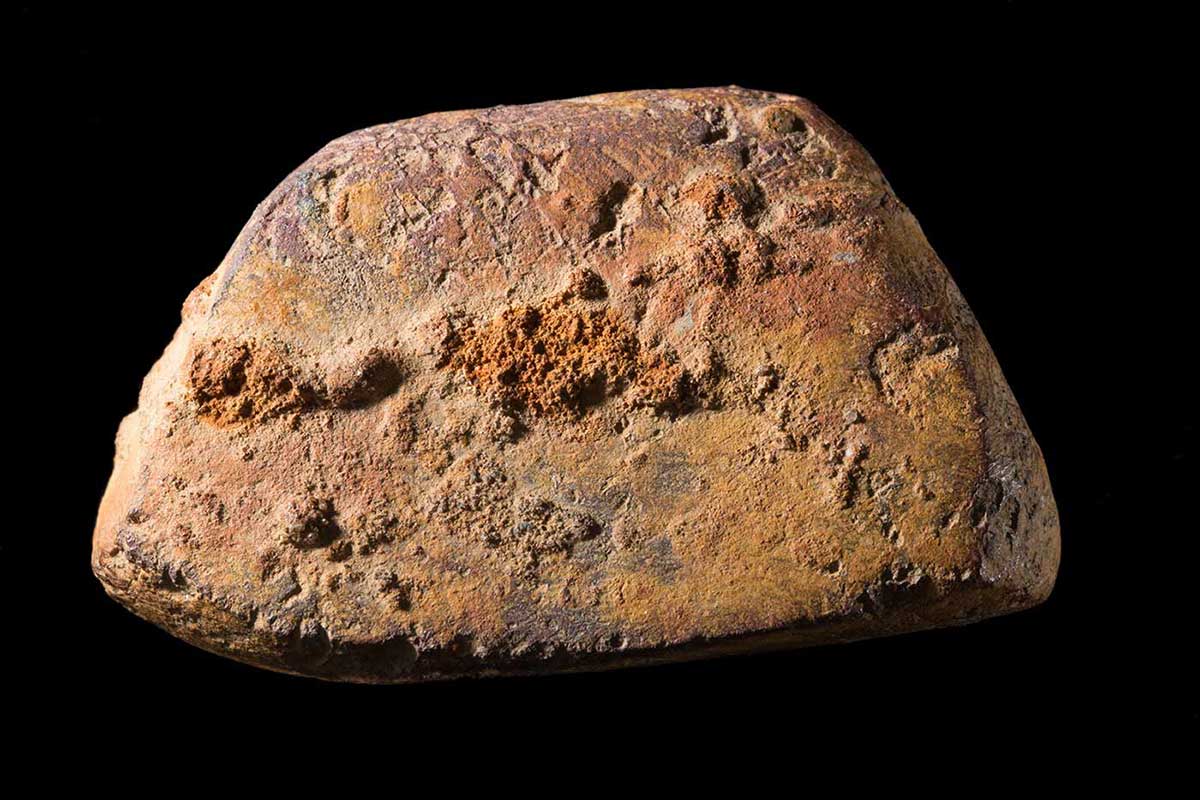The date of earliest occupation of the Australian continent is constantly changing. New excavations and improved dating techniques push the date further back into the distant past.
Footprints in the sand, artefacts in ancient shelters and items such as this piece of ochre all provide evidence of the vast human history of the continent.
However, this is just part of the story, because Aboriginal people traditionally believe they have been here in their country since the time of creation and, prior to that, the continent was a ‘land before time’.

Aboriginal occupation
Aboriginal people are known to have occupied mainland Australia for at least 65,000 years. It is widely accepted that this predates the modern human settlement of Europe and the Americas.
Increasingly sophisticated dating methods are helping us gain a more accurate understanding of how people came to be in Australia. Some of the earliest archaeological sites are found in northern Australia.
This piece of ochre, excavated from the Madjebebe (Malakunanja II) site in Arnhem Land, is believed to be over 50,000 years old.
Other sites of considerable antiquity such as Lake Mungo in New South Wales and Devil’s Lair in south-west Western Australia continue to be discovered and researched across the continent.
Dreaming
From an Aboriginal and Torres Strait Islander view of creation, people have always been in Australia since the land was created.
On mainland Australia, the Dreaming is a system of belief held by many first Australians to account for their origins. In the Dreaming all-powerful beings roamed the landscape and laid the moral and physical groundwork for human society.
Prior to the Dreaming there was a 'land before time' when the earth was flat. Ancestral beings moulded the landscape through their actions and gave life to the first people and their culture. No one can say exactly how old the Dreaming is. From an Indigenous perspective the Dreaming has existed from the beginning of time.
Renowned author Tom Keneally discusses why the finding of ancient human remains in the Willandra Lakes region is among his top three Defining Moments in Australian History
In our collection
References
Aboriginal DNA dates Australian arrival, ABC Science
The spread of people to Australia, Australian Museum
Scott Cane, First Footprints: The Epic Story of the First Australians, Allen & Unwin, Sydney, 2013.
Josephine Flood, Archaeology of the Dreamtime: The Story of Prehistoric Australia and its People, HarperCollins Publishers, Sydney, 1999 (revised edition).
Peter Hiscock, Archaeology of Ancient Australia, Routledge, London, 2007.
John Mulvaney and Johan Kamminga, Prehistory of Australia, Allen & Unwin, Sydney, 1999.
